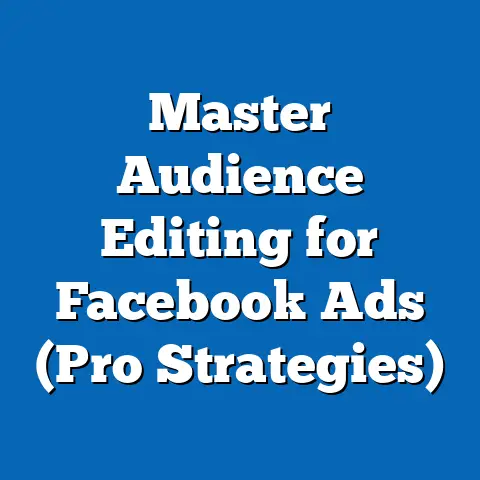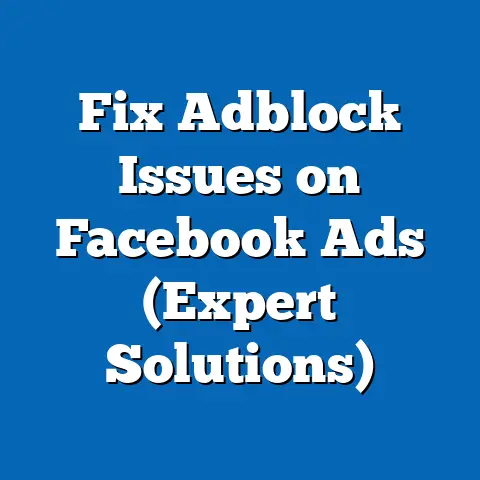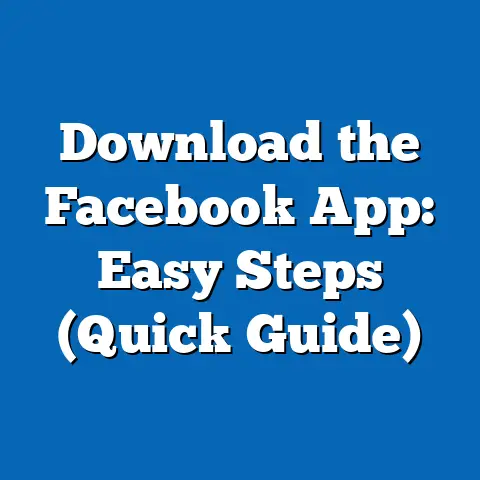Facebook Ads Benchmarks by Industry (2025)
In a world where digital advertising budgets are projected to exceed $500 billion by 2025, how can businesses across industries optimize their Facebook ads to outperform benchmarks and drive real results? This question is more than rhetorical—it’s a pressing challenge for marketers navigating an increasingly competitive digital landscape. As platforms like Facebook (now under Meta) evolve with AI-driven tools and adapt to privacy shifts, understanding benchmarks has become essential for allocating budgets effectively and achieving measurable ROI. In this article, we’ll explore the latest projections for 2025, breaking down key metrics and industry-specific insights to help you refine your strategies.
Facebook Ads have transformed from simple banner displays into sophisticated, data-driven campaigns that leverage artificial intelligence, user behavior, and emerging technologies. At their core, Facebook Ads are targeted advertisements delivered through the Meta platform, encompassing Facebook, Instagram, and Messenger, to reach specific audiences based on demographics, interests, and behaviors. These ads play a pivotal role in modern digital marketing by enabling businesses to connect with billions of users in real time, fostering engagement that drives sales, brand awareness, and customer loyalty.
Benchmarks, in the context of Facebook Ads, refer to standard performance metrics that serve as reference points for evaluating campaign effectiveness. Key metrics include:
- Cost Per Click (CPC): The average cost paid for each click on an ad, indicating how efficiently traffic is generated.
- Cost Per Mille (CPM): The cost per 1,000 impressions, measuring the expense of reaching a broad audience.
- Click-Through Rate (CTR): The percentage of viewers who click on an ad after seeing it, reflecting ad relevance and appeal.
- Conversion Rate: The proportion of clicks that result in desired actions, such as purchases or sign-ups, showcasing ad effectiveness in driving outcomes.
- Return on Ad Spend (ROAS): The revenue generated per dollar spent on ads, a critical indicator of profitability.
These benchmarks matter profoundly in 2025, as businesses face heightened competition and evolving consumer expectations. According to Statista’s projections, global digital ad spend will surpass $500 billion, with Meta capturing a significant share through its advanced targeting capabilities. However, challenges like Apple’s App Tracking Transparency (ATT) regulations, which limit user data tracking, have already reduced average CTRs by up to 20% in 2024, as reported by Meta’s own analyses. This has forced advertisers to rely more on first-party data and contextual targeting.
Emerging trends are reshaping these benchmarks. AI-driven targeting, for instance, uses machine learning algorithms to optimize ad delivery in real time, potentially lowering CPCs by 10-15% while improving CTRs. The metaverse, Meta’s vision for immersive virtual environments, introduces new ad formats like interactive AR experiences, which could boost conversion rates by making ads more engaging—think of it as turning a static billboard into a interactive storefront where users can “try on” products virtually.
Privacy regulations continue to influence benchmarks, with the deprecation of third-party cookies pushing advertisers toward privacy-first strategies. A 2024 report from eMarketer forecasts that by 2025, CPMs could rise by 5-10% due to increased competition for limited data signals. Meanwhile, global economic shifts, such as inflation and supply chain disruptions, may affect ad performance variably by region. For example, in North America, where ad spend is highest, benchmarks are expected to be more stable, while in Asia-Pacific, rapid digital growth could lead to lower CPCs as markets mature.
To build credibility, let’s draw from data: Meta’s 2024 Advertising Trends report indicates that average global CPCs hovered around $0.50-$1.50 in 2024, with projections for 2025 suggesting a slight increase to $0.60-$2.00 due to inflation. Statista’s data shows CTRs averaging 0.9% in 2024, with potential growth to 1-2% in 2025 as AI refines ad relevance. These evolving benchmarks underscore why businesses must adapt—failing to do so could mean wasted budgets and missed opportunities in a hyper-connected world.
In summary, this introduction sets the stage for a deep dive into 2025 benchmarks, emphasizing their role in strategic planning. As we progress, we’ll explore general overviews before zooming into industry-specific insights, helping you answer that opening question: How can your business not just meet, but exceed, these standards?
Overview of Facebook Ads Benchmarks
Building on the introduction, let’s examine the general benchmarks for Facebook Ads in 2025, drawing from historical trends and forward-looking projections. This overview provides a foundational understanding, helping marketers benchmark their campaigns against industry norms and identify areas for improvement.
In 2025, Facebook Ads benchmarks are shaped by a mix of technological advancements and external factors. Historical data from 2023-2024 shows steady evolution: For instance, Meta’s reports indicate that global average CPCs dropped from $1.20 in 2023 to $0.97 in 2024 due to enhanced AI optimization, with 2025 projections estimating a range of $0.60-$2.00. This variability stems from factors like ad format, audience targeting, and regional differences. Similarly, CPMs, which measure broad reach, averaged $7.50 in 2024 (per Statista) and are forecasted to climb to $5-$15 in 2025, influenced by rising ad inventory costs in saturated markets.
Key metrics warrant detailed analysis:
-
CPC (Cost Per Click): This metric reflects the efficiency of driving traffic. In 2025, expect averages of $0.60-$2.00 globally, with lower ends in emerging markets like India ($0.60) and higher in competitive regions like the US ($1.50-$2.00). Factors influencing CPC include bid strategies and ad quality scores—Meta’s algorithm favors high-relevance ads, potentially reducing costs by up to 15%.
-
CPM (Cost Per Mille): As a measure of exposure, CPM benchmarks for 2025 are projected at $5-$15. This range accounts for ad formats; video ads, which dominate Meta’s platform, often have higher CPMs ($10-$15) due to their engaging nature. Regional variations are significant: North America might see $12 CPM, while Asia-Pacific could average $8, as per Kantar’s 2024 analysis.
-
CTR (Click-Through Rate): Averaging 1-3% in 2025, CTR is a barometer of ad appeal. Historical data from 2024 shows 0.9% globally, with AI enhancements expected to push this to 1.5% by 2025. Ad objectives play a role—awareness campaigns typically have lower CTRs (0.5-1%), while conversion-focused ads reach 2-3%.
-
Conversion Rate: This metric, indicating action taken post-click, is forecasted at 0.5-4% in 2025. It varies by objective; e.g., lead generation ads average 2%, while sales ads hit 4%. Economic factors, like consumer confidence, could sway these numbers—2024’s post-pandemic recovery boosted rates by 10%, per eMarketer.
-
ROAS (Return on Ad Spend): Projected at 2-6x in 2025, ROAS depends on industry and targeting precision. High-performing campaigns might achieve 5x, but factors like ad fatigue could lower this to 2x.
To illustrate, consider a hypothetical example: A US-based e-commerce brand running video ads in 2025 might see a CPC of $1.20, CPM of $10, CTR of 2%, conversion rate of 3%, and ROAS of 4x. This outperforms global averages, thanks to targeted demographics.
Influencing factors include audience demographics—younger audiences (18-34) yield higher CTRs (up to 2.5%)—and ad formats. Video ads, for instance, outperform image ads by 20% in engagement, as per Meta’s data. Global economic shifts, such as inflation, could increase costs by 5-10%, while regional differences are stark: North America’s benchmarks are 15-20% higher than Asia-Pacific’s due to market maturity.
Charts and tables enhance this overview. For instance:
Industry-Specific Benchmarks
This section dives into industry-specific benchmarks for 2025, providing granular insights based on historical data, current trends, and projections. Each industry analysis incorporates data from Meta, Statista, and third-party reports, highlighting how factors like AI, privacy regulations, and economic shifts influence performance. We’ll explore e-commerce, healthcare, finance, technology, education, and other sectors, using subheadings for clarity.
E-commerce
In the e-commerce sector, where online shopping dominates, Facebook Ads benchmarks in 2025 are poised for growth, driven by features like shoppable posts and personalized retargeting. Projected CPC ranges from $0.50-$2.00, CPM from $5-$15, CTR from 1-3%, and ROAS from 2-5x. These figures build on 2024 trends, where Statista reported average CPCs at $1.10, with AI optimizations expected to reduce this by 10-15% in 2025.
Core factors include seasonal trends; for example, holiday shopping seasons could spike CTRs to 3-4%, as consumers are more engaged. A hypothetical scenario: An online clothing retailer targets 25-34-year-olds with video ads, achieving a CPC of $0.80, CPM of $8, CTR of 2.5%, and ROAS of 4x through retargeting. Case studies, like a 2024 Meta report on a fashion brand, show that personalized ads increased conversions by 20%, underscoring the importance of dynamic content.
Challenges include ad saturation, which might raise CPMs, but advantages lie in tools like Meta’s Advantage+ shopping campaigns, potentially boosting ROAS. Real-world application: Businesses can use these benchmarks to allocate budgets, aiming for at least 3x ROAS during peak seasons.
Healthcare and Pharmaceuticals
Healthcare advertising faces unique constraints, with 2025 benchmarks reflecting regulatory hurdles and the rise of telehealth. Expected CPC is $1.00-$3.00, CPM $10-$20, CTR 0.5-2%, and conversion rates 0.5-2%. Meta’s 2024 data showed CPCs at $1.50, with projections accounting for stricter data privacy laws like GDPR, which could increase costs by 5-10%.
Video ads, integrating telehealth demos, enhance engagement; for instance, a pharma company promoting wellness apps might see CTRs of 1.5% and conversion rates of 1.5%. A case study from Kantar highlights how a telehealth provider used targeted ads to achieve 1.8% conversion rates in 2024, projecting 2% in 2025 with AR integrations. Advantages include precise audience targeting, but disadvantages stem from compliance issues, potentially limiting ROAS to 2-4x.
In practice, healthcare marketers should focus on educational content to build trust, using benchmarks to measure engagement and adjust for regional variations, like higher CPMs in Europe.
Finance and Banking
For finance and banking, benchmarks emphasize compliance and AI-driven personalization, with 2025 projections of CPC $0.80-$2.50, CTR 0.5-1.5%, and ROAS 3-6x. Statista’s 2024 figures showed CPCs at $1.20, with AI chatbots expected to improve CTRs by 20% in 2025.
Trends like data privacy laws influence these metrics; for example, ads for loans might see CPMs of $12-$18, with conversion rates of 1-3%. A hypothetical scenario: A bank runs lead generation ads, achieving CPC of $1.00, CTR of 1%, and ROAS of 4x through chatbot interactions. Advantages include high ROAS from targeted B2B campaigns, but challenges like ad fraud could raise costs.
Real-world applications involve using benchmarks for risk assessment, ensuring campaigns comply with regulations while maximizing returns.
Technology and SaaS
In the tech and SaaS sector, innovation drives benchmarks, with projected CPC $0.60-$1.80, CPM $8-$18, and conversion rates 1-4%. Building on 2024 data from eMarketer, where CPCs averaged $0.90, AR/VR ads could elevate CTRs to 2-3% in 2025.
B2B targeting is key; for instance, a SaaS company might run content ads with CPC of $0.70 and ROAS of 5x. Advantages include scalable reach, but disadvantages involve high competition, potentially increasing CPMs. Applications include lead nurturing, where benchmarks guide A/B testing for optimal performance.
Education and E-Learning
Education benchmarks in 2025 reflect post-pandemic shifts, with CPC $0.40-$1.50, CTR 1-2.5%, and ROAS 1.5-4x. Meta’s reports show 2024 CPCs at $0.60, with demographic targeting boosting outcomes.
For example, ads for online courses might achieve CTR of 2% among 18-24-year-olds. Advantages lie in cost-effective reach, but challenges include engagement drops post-enrollment.
Other Industries (e.g., Retail, Travel, and Consumer Goods)
Retail benchmarks mirror e-commerce, with CPC $0.50-$2.20 and CPM $6-$16. Travel sees CPC $0.70-$2.00, influenced by seasonal demand, while consumer goods average ROAS of 2-5x. Competitive landscapes drive these metrics, with emerging tech like AI enhancing performance.
Trends, Challenges, and Future Outlook
As we synthesize the trends shaping Facebook Ads benchmarks in 2025, machine learning integration stands out, optimizing campaigns for better ROAS amid cookie deprecation. Challenges like ad fatigue, where users ignore repetitive content, could raise CPMs by 10%, while market saturation increases costs.
Businesses can use benchmarks for strategic planning, such as allocating budgets based on industry-specific CTRs. Tying back to the opening question, by leveraging AI and privacy-compliant strategies, companies can outperform norms and drive results.
Conclusion
In conclusion, Facebook Ads benchmarks for 2025 vary by industry, with e-commerce seeing CPCs of $0.50-$2.00 and finance ROAS of 3-6x, underscoring their role in marketing success. As digital landscapes evolve, these metrics offer a roadmap for optimization, highlighting opportunities in AI and emerging tech.






